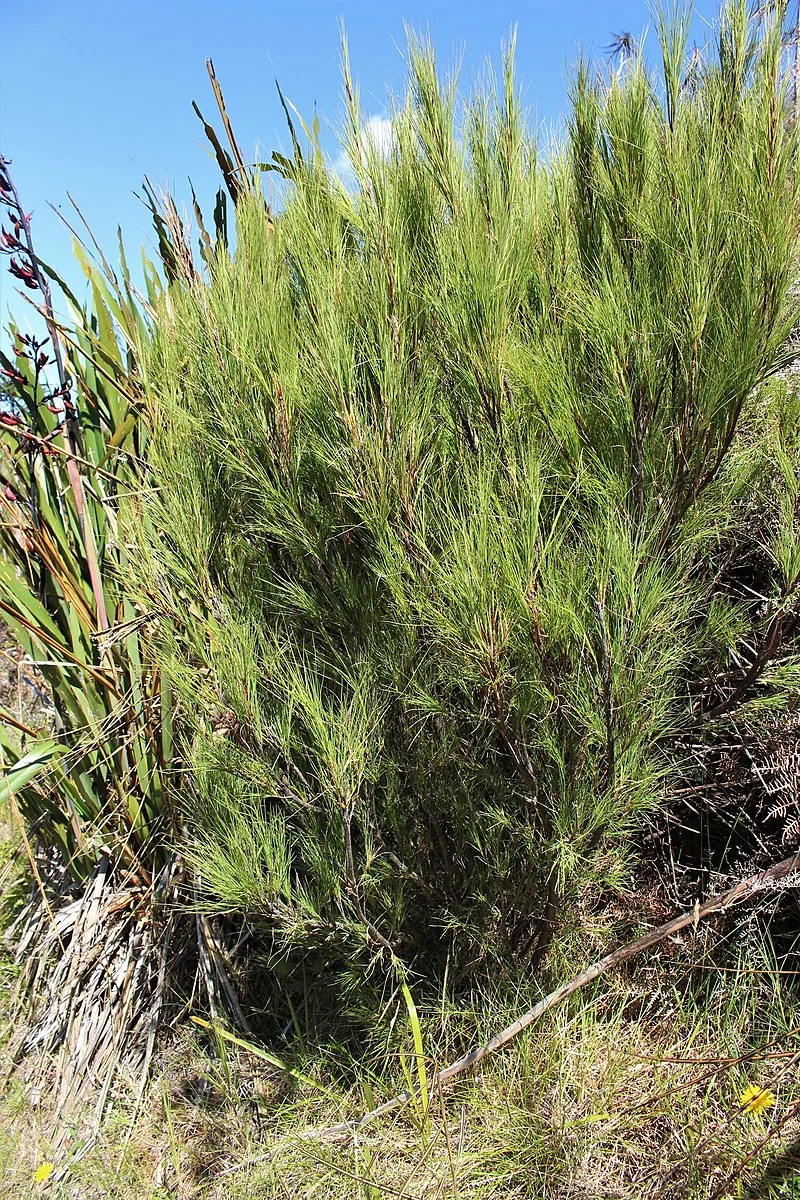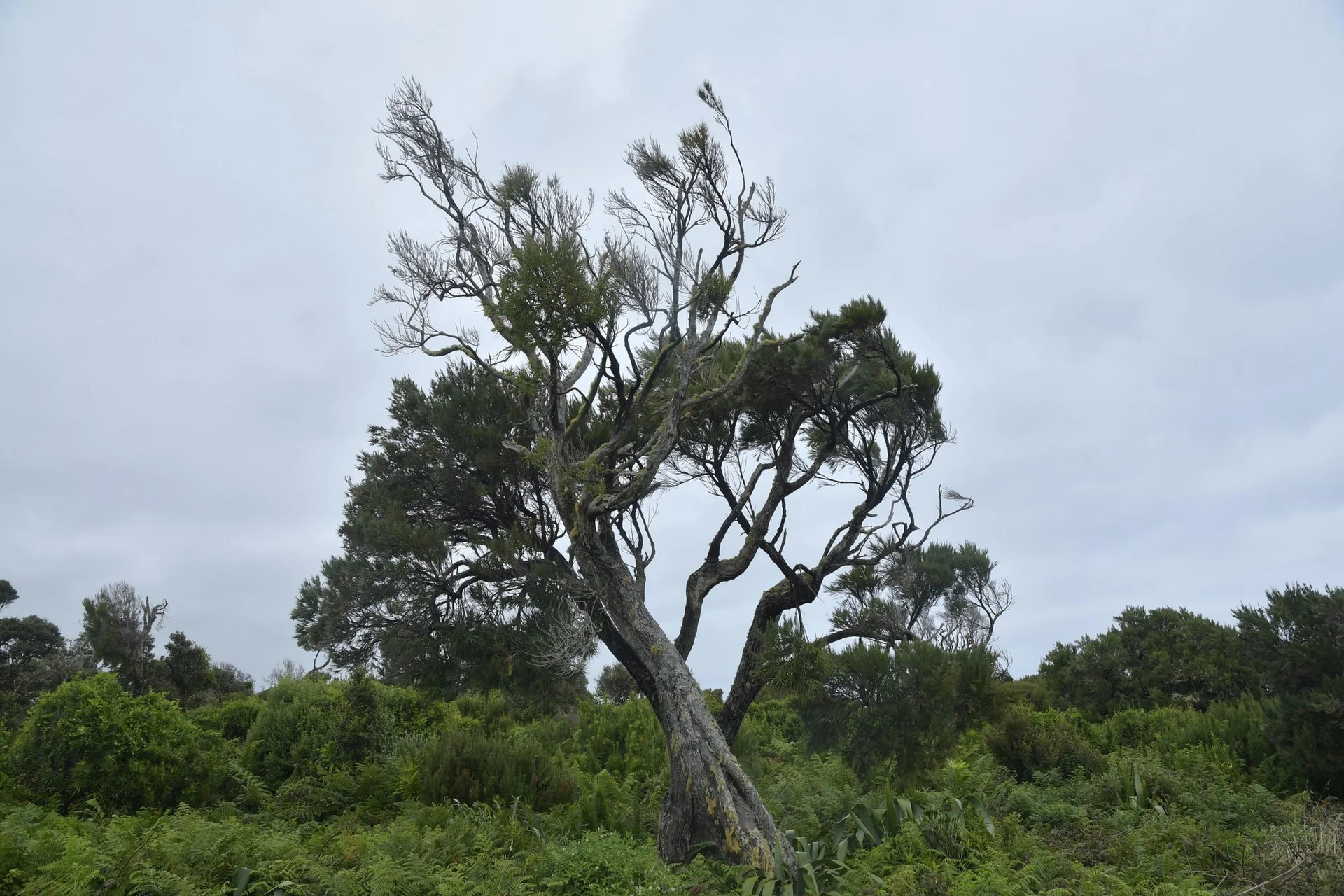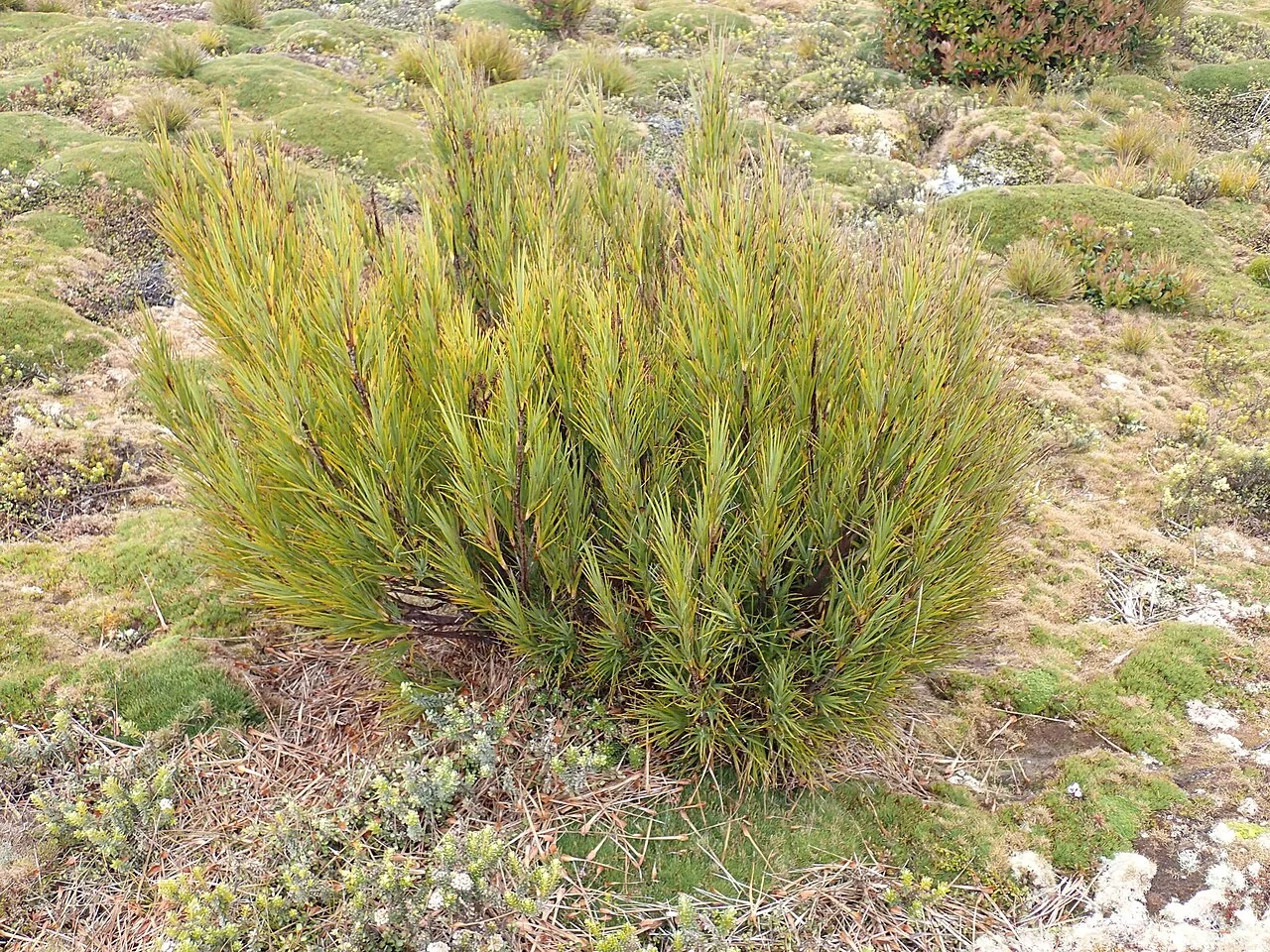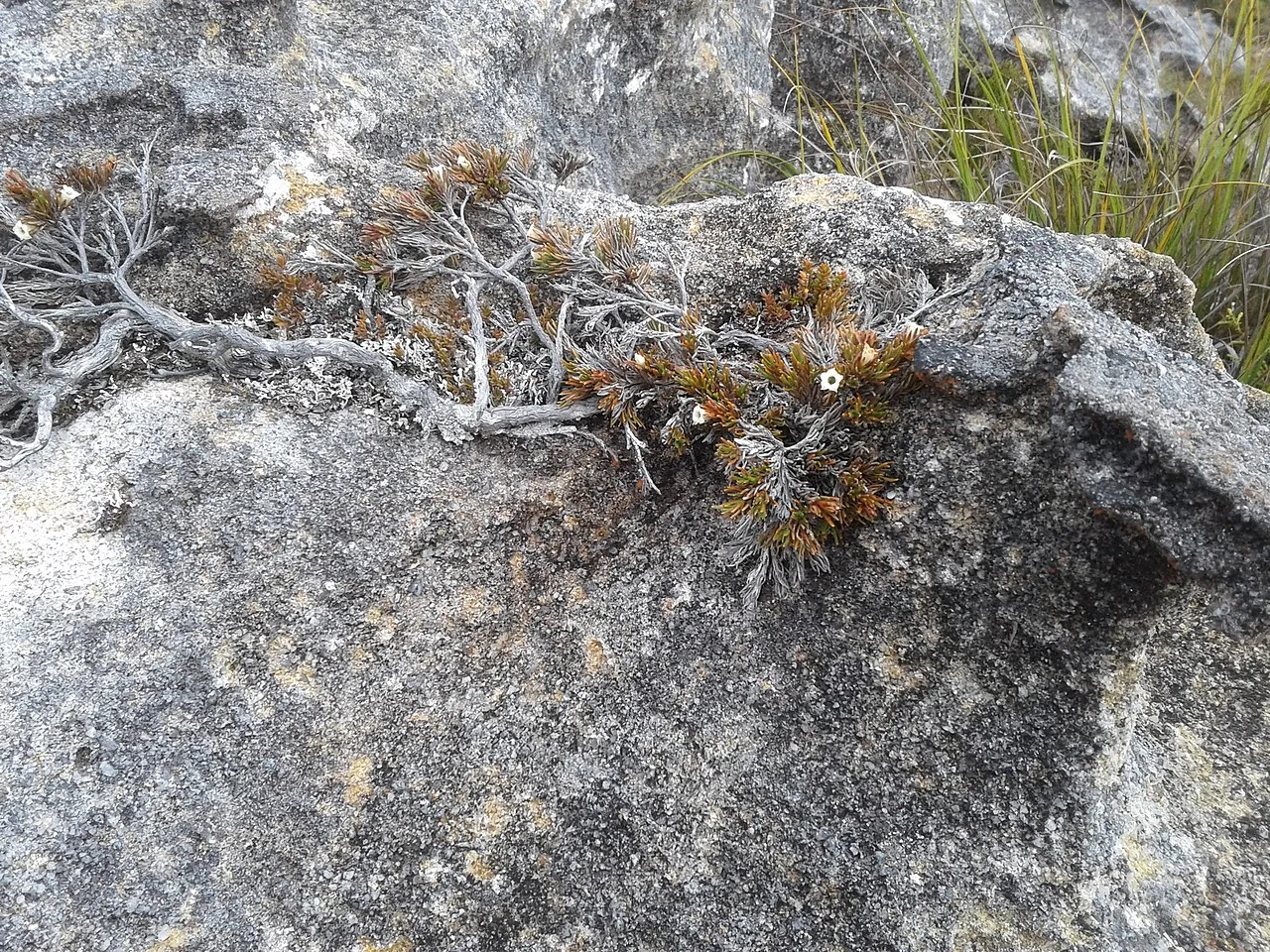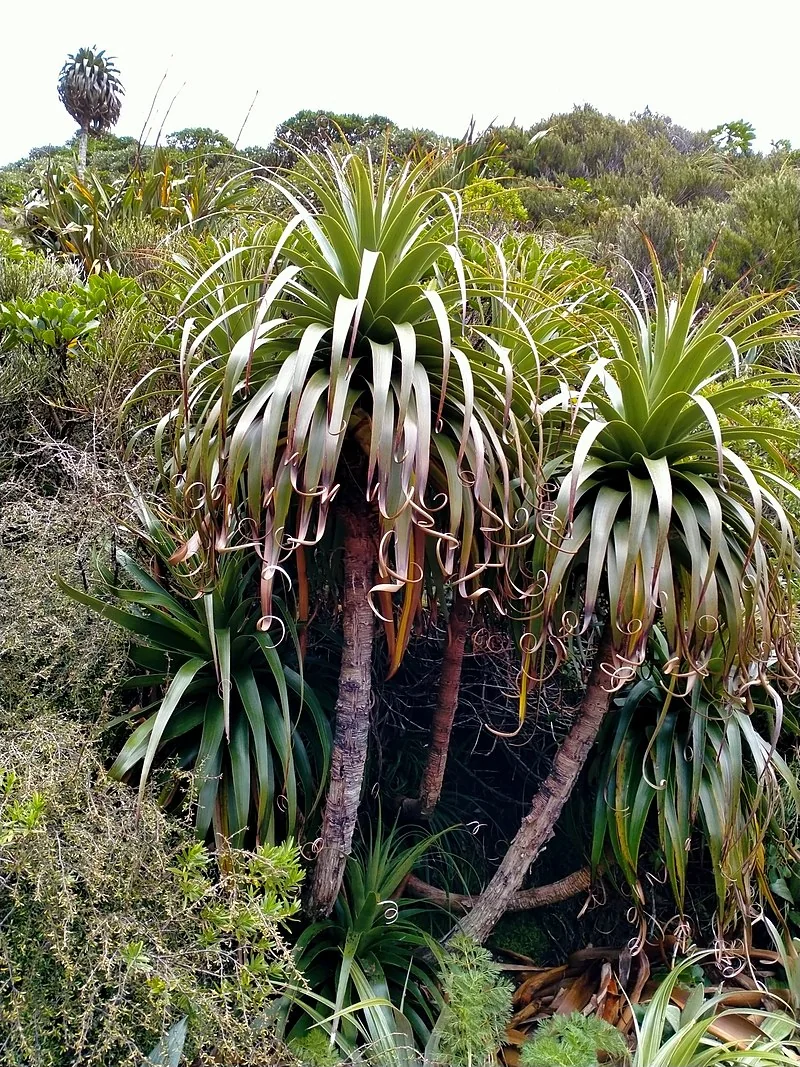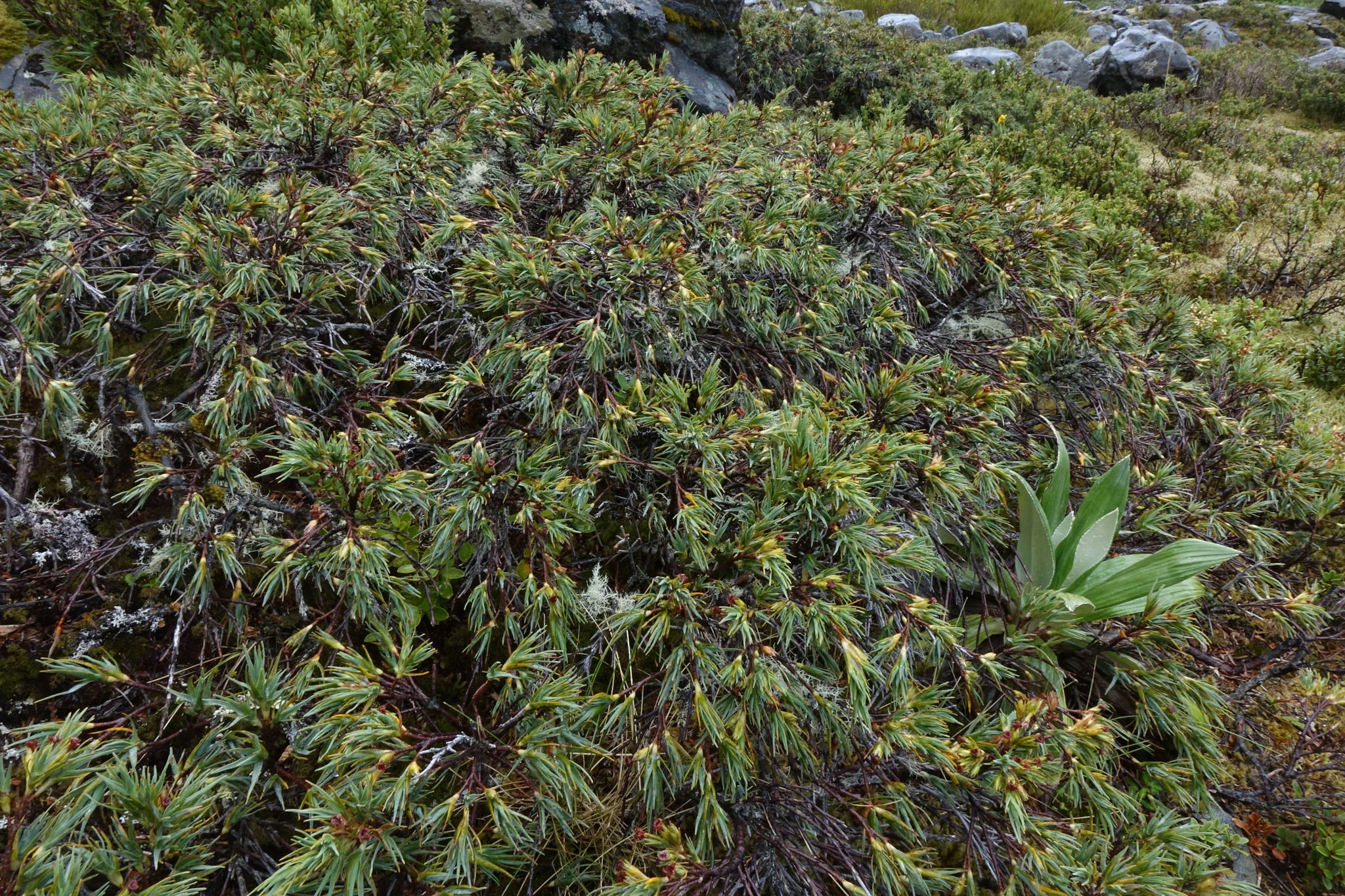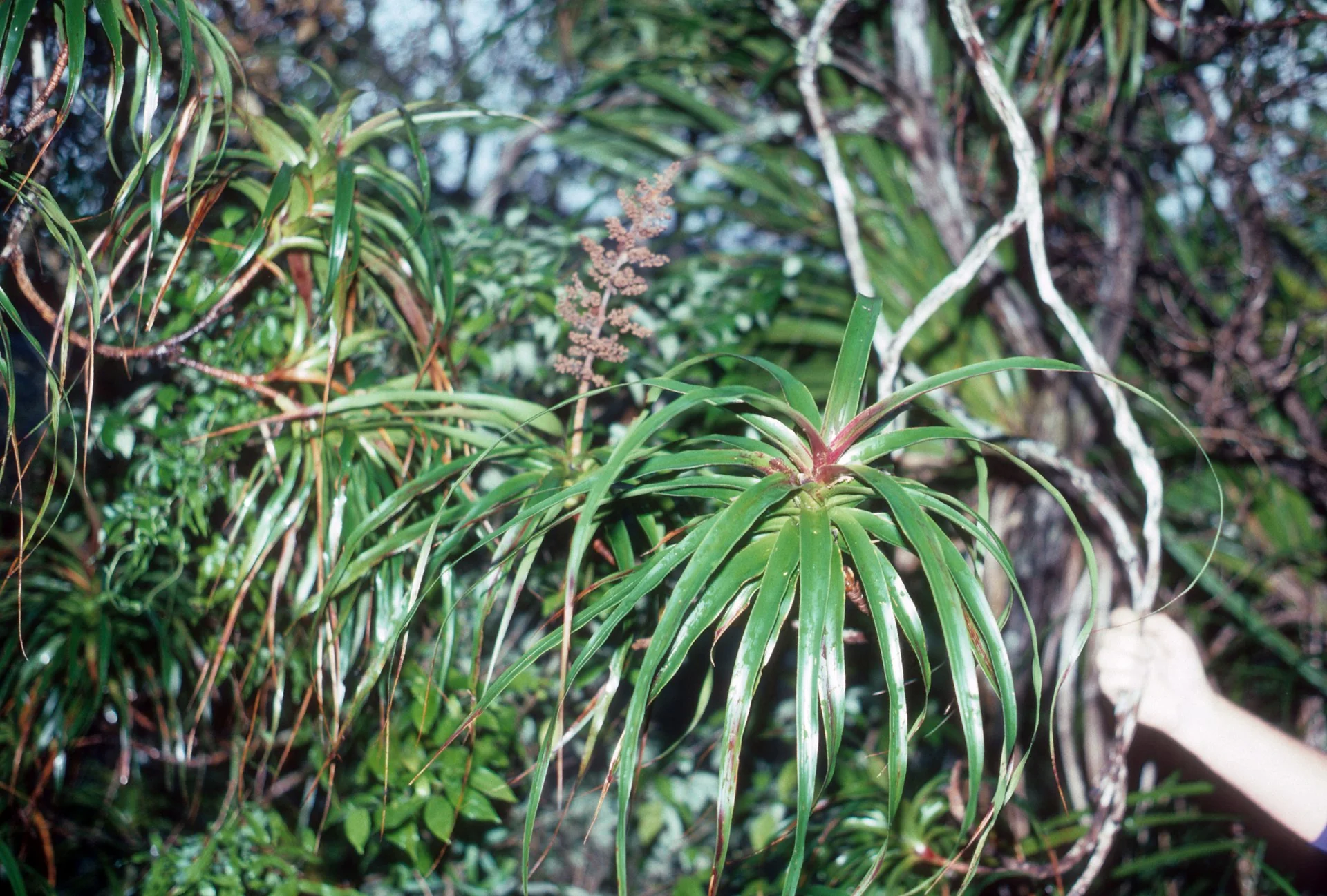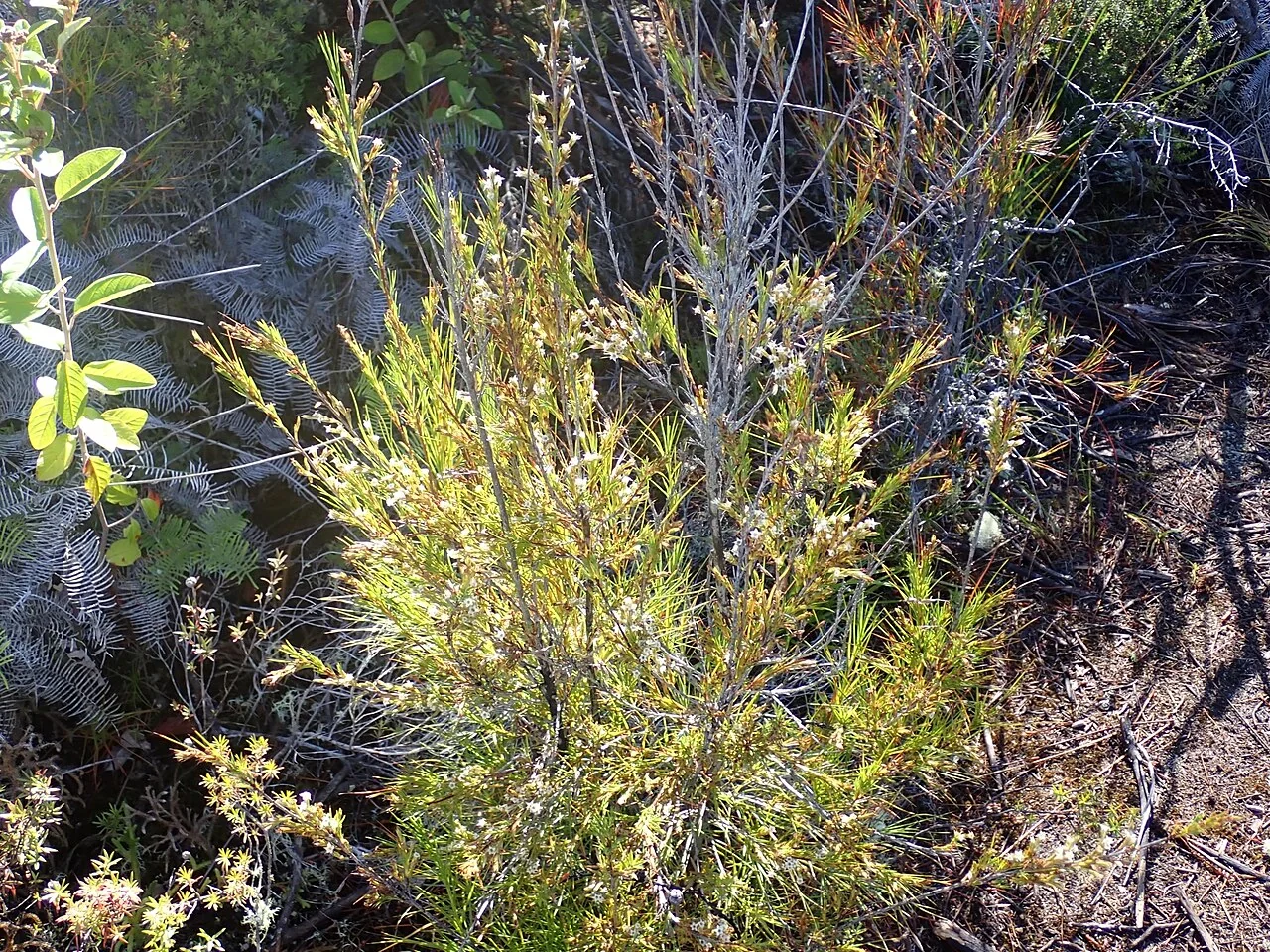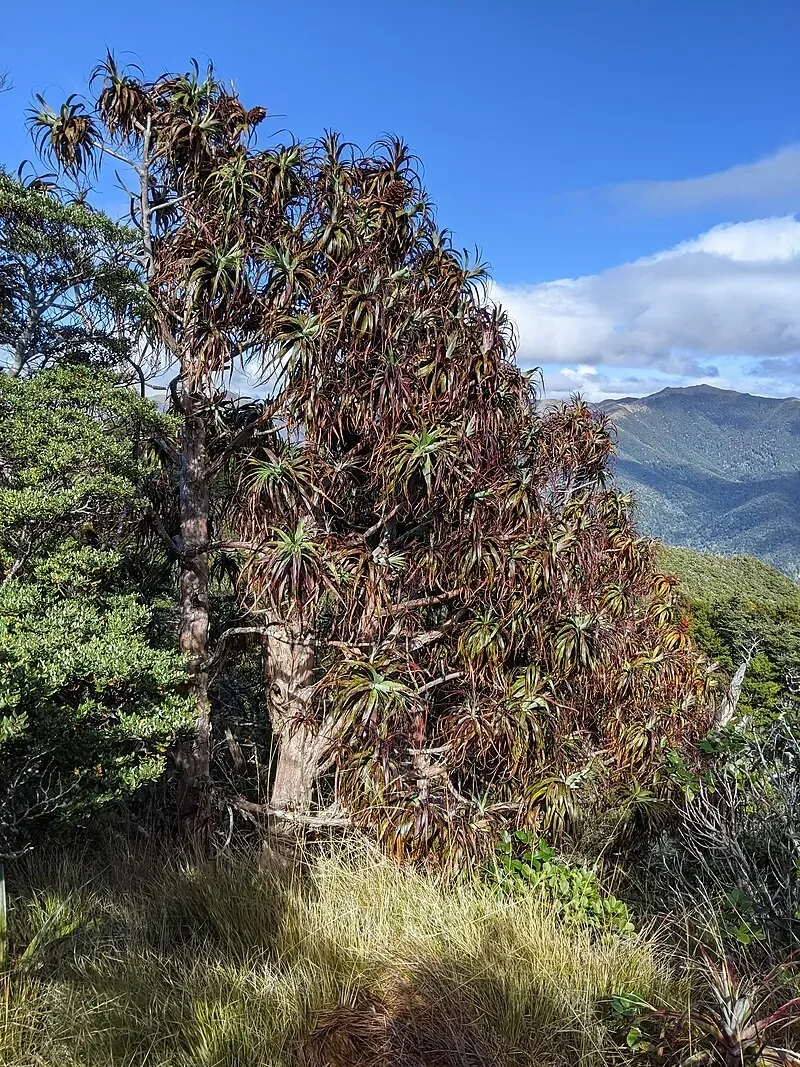
Mountain Neinei
Introduction
Introduction Overview
Mountain neinei ( Dracophyllum ), also known as the grass tree, is a distinctive native New Zealand plant with long, narrow leaves and a striking, tree-like form. It is found in subalpine and montane regions. native trees .

Plant Description
Botanical Features
Dracophyllum traversii , commonly known as Mountain Neinei, Grass Tree, or Pineapple Tree, is a robust small tree or shrub endemic to New Zealand. It can grow to a height of 0.2-13 meters and is characterized by its candelabra-shaped crown and flaky, light brown bark on older branches, with reddish-brown young stems. Its distinctive leaves are crowded at the tips of branches, resembling those of Bromeliaceae species. These leathery, linear-triangular to lanceolate leaves measure between 90-860 mm long and 17-50 mm wide, often displaying a glaucous bloom when young. It produces a dense, pyramidal inflorescence, shorter than the leaves, which can be 180-400 mm long, with red flowers. The fruit is a small, dry, reddish-brown capsule. This species inhabits a variety of forest and shrubland types, from lowland to subalpine regions, found in gorges, on cliffs, and on mountainsides across New Zealand's North and South Islands. It has a long lifespan, estimated between 500 and 600 years.
Quick Facts
Key Features
| Scientific Name | Dracophyllum Traversii |
|---|---|
| Height | Up to 10 m (33 ft) |
| Spread | 2-4 m (6-13 ft) |
| Water Needs | Low |
| Light | Full sun |
| Frost Tolerance | High |
| Salt Tolerance | Low |
| Growth Rate | Very slow |
| Lifespan | Centuries |
Climate Best Suited to
Climate Best Suited to Overview
| City | Climate Suitability |
|---|---|
| Whangārei | Ideal |
| Auckland | Ideal |
| Hamilton | Ideal |
| Tauranga | Ideal |
| Rotorua | Ideal |
| Gisborne | Ideal |
| New Plymouth | Ideal |
| Napier | Ideal |
| Whanganui | Ideal |
| Palmerston North | Ideal |
| Wellington | Ideal |
| Nelson | Ideal |
| Christchurch | Ideal |
| Dunedin | Ideal |
| Invercargill | Ideal |
Grass tree ( Dracophyllum ) is best suited to montane and subalpine regions of the South Island and central North Island. It struggles in warm, lowland, or humid coastal areas.
Adapted to alpine and subalpine conditions. Tolerates extreme temperature variations from -10°C to 20°C. Requires high UV exposure and strong winds.
Natural Habitat
Dracophyllum traversii , also known as mountain neinei, grass tree, or pineapple tree, is a deciduous tree or shrub endemic to New Zealand. It is found in both the North and South Islands.
Its natural habitat includes montane and subalpine heath forest and scrub, often alongside tree daisies, particularly on wetter mountains. It can also be found in various forest and shrubland types, ranging from lowland to subalpine, in gorges, on cliffs, and on mountainsides. The species grows across a significant altitudinal range, from sea level up to 1,768 meters (5,801 feet), with subalpine and montane occurrences typically above 750 meters.
In the North Island, Dracophyllum traversii is scattered from Waima Forest south to near Taumarunui, extending east to the East Cape, and is also present in the Coromandel Range, Great and Little Barrier Islands, and the southern Central Volcanic Plateau. In the South Island, it is predominantly found in western areas, from Northwest Nelson to the central Southern Alps, and further south to Fiordland and Central Otago. It often forms extensive stands along ridge crests and is found near the treeline on wet mountains. The plant thrives in well-draining, consistently moist soil.
Plant Conservation
Dracophyllum traversii , also known as mountain neinei, grass tree, and pineapple tree, is classified as "Not Threatened" under the New Zealand Threat Classification System as of 2023, with an estimated population of at least 100,000. The IUCN 3.1 also lists its conservation status as "Least Concern".
This deciduous tree is endemic to New Zealand, growing to a height of 0.2-13 meters and having a lifespan of 500 to 600 years. It can be found in various forest and shrubland types, from lowland to subalpine regions, across both the North and South Islands of New Zealand.
Soil
Requires excellent drainage and rocky, mineral-rich soil. Prefers full sun and exposed positions. Very slow -growing, taking decades to reach maturity. Minimal watering needed.
Planting Guide
When to Plant
The best time to plant Dracophyllum is during spring or autumn when soil temperatures are moderate and rainfall is reliable.
How to Plant
Dig a hole twice the width of the root ball and slightly deeper. Place Dracophyllum in the hole, backfill with soil, and water thoroughly. Mulch around the base to retain moisture.
Ecological Role
Wildlife Interactions
Dracophyllum traversii plays a crucial role in New Zealand's alpine and subalpine ecosystems. Its deep , extensive root system helps stabilize rocky slopes and prevent soil erosion in harsh, exposed environments. The plant 's dense leaf clusters and fibrous trunk provide important shelter and microhabitats for alpine insects, spiders, and small birds. Its flowers attract native pollinators, supporting the health and diversity of high-altitude pollinator communities. As a slow-growing, long-lived species, Dracophyllum traversii contributes to the structural complexity and resilience of alpine plant communities, helping to maintain biodiversity and ecosystem stability in regions where few other woody plants can survive.
Uses and Significance
Garden Uses
- Important alpine plant for preventing soil erosion.
- Used in alpine gardens and native plant collections.
- Provides habitat for alpine insects and birds.
Landscaping Uses
Landscaping Uses Overview
Dracophyllum is highly valued in landscaping for its aesthetic appeal and practical benefits. It can be used in various garden styles and landscape applications.
Seasonal Care
Spring
- Mulch well with coarse gravel or scoria to maintain cool, moist roots and suppress weeds, then water regularly to support new growth.
Summer
- Watch for any signs of stress or pests, and ensure consistent moisture during prolonged dry spells to prevent wilting.
Autumn
- Remove dead or damaged foliage to maintain plant health and tidiness, preparing it for the winter dormancy period.
Winter
- Protect from extreme cold and ensure good drainage around the crown to prevent waterlogging, especially in areas prone to heavy snow or frost.
Pruning
Pruning Techniques
Prune dead or damaged leaves in late winter. Minimal pruning required.
Regular pruning of Dracophyllum helps maintain its health and desired shape. Remove any dead, diseased, or crossing branches to improve air circulation and reduce the risk of pest and disease problems.
For most native plants, light pruning throughout the growing season is better than heavy pruning at once. This approach encourages healthy new growth while maintaining the plant's natural form and character.
How to Grow Mountain Neinei
Mountain Neinei, also known as Grass Tree, is a striking and highly specialized native shrub or small tree that adds a unique, sculptural element to alpine and subalpine gardens. Its rigid, upright growth habit and dense clusters of glaucous blue-green leaves are perfectly adapted to the harsh conditions of its natural habitat, including strong winds, high UV exposure, and extreme temperature fluctuations. While it is a slow-growing species, its resilience and unique aesthetic make it a rewarding plant to cultivate for those who can provide its specific environmental needs. Understanding its propagation methods is key to successfully growing this specialized species.
From Seed
Propagating Mountain Neinei from seed can be a slow and challenging process, but it is often the most reliable method for this species. Collect fresh seeds when ripe, typically in late summer or autumn. Sow the seeds onto a well-draining seed-raising mix, lightly covering them with a thin layer of fine grit or sand. The seeds may benefit from a period of cold stratification (placing seeds in a moist medium in the refrigerator for 4-6 weeks) to improve germination rates. Maintain consistent moisture in the seed tray and provide cool, bright conditions. Germination can be erratic and may take several months. Once seedlings have developed a few true leaves, they can be potted into individual containers and grown in a sheltered location before planting out.
From Cuttings
Propagation of Mountain Neinei from cuttings is generally more challenging and less reliable than from seed. Semi-hardwood cuttings can be attempted in late summer or early autumn from healthy, current season's growth. Cuttings should be about 4-6 inches long. Remove the lower leaves and dip the cut end in a rooting hormone. Plant the cuttings into a well-draining, sterile cutting mix, such as a blend of perlite and sand. Maintain high humidity around the cuttings, perhaps by placing them under a plastic dome or in a propagator, and provide bottom heat to encourage root development. Keep the medium consistently moist but not waterlogged. Rooting can be slow and success rates can be low, making this method more suitable for experienced propagators.
Pests and Diseases
Common Pests
Dracophyllum is generally resistant to most pests due to its native adaptations. However, it may occasionally be affected by common garden pests such as aphids or scale insects.
Disease Prevention
To prevent diseases, ensure good air circulation around Dracophyllum and avoid overwatering. Remove any diseased plant material promptly to prevent spread.
Cultural Significance
Traditional Uses and Values
Dracophyllum traversii , commonly known as mountain neinei, holds cultural significance for the Māori people of New Zealand. Its long, wiry leaves were traditionally used for weaving baskets and mats.
Bonus Tip
Expert Growing Advice
Dracophyllum traversii , or Mountain Neinei, is a plant of fascinating contrasts! Despite its common name "pineapple tree" due to its leaf arrangement, it's actually a member of the heath family. This ancient plant can live for an impressive 500 to 600 years, making it a true living relic of New Zealand's alpine landscapes. Even more intriguing is its deciduous nature; unlike most evergreens, it sheds its leaves during its growing season (typically December to March), with new leaves taking two to three seasons to fully grow. This unique adaptation helps it survive in the harsh, exposed environments where it thrives.
